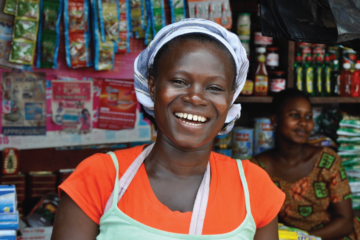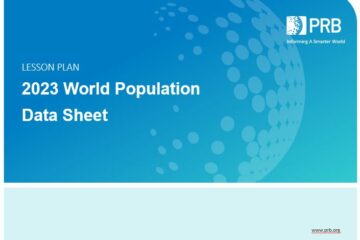
In Philippines, New Data Show Declines in Child Mortality, Fertility
Date
November 18, 2010
Author
(November 2010) In 1970, then-President Ferdinand Marcos launched the Philippines’ first National Population Program to improve access to family planning to lower fertility and slow population growth. Fertility has declined since then, although the level is still high compared with other countries in Southeast Asia. Data from the most recent Demographic and Health Survey (DHS) show total fertility rate falling from 6.0 lifetime births per woman in 1970 to 3.3 children per woman in 2006.1 Average fertility for Southeast Asia in 2010 is about 2.4.2 With its moderately high fertility, the Philippines population of 94 million is growing by 1.8 percent annually.3
This growth rate is challenging the government’s efforts to slow the increase in population and encourage development.4 Filipino President Gloria Macapagal Arroyo is addressing the need for family planning and the importance of adolescent sexual health, especially for those living in poverty. The Arroyo administration is focusing reproductive health services on natural family planning in accordance with a woman’s menstrual cycle, biological signs of fertility, and calendar-based methods; birth spacing (having children at least three years apart); and breastfeeding.
The DHS results also show that the mortality rate for children under age 5 decreased from 58 deaths per 1,000 live births in 1998 to 34 deaths per 1,000 in 2008.
Population and Key Indicators: Philippines
| 2010 Total Population (millions) | 94 |
| 2050 Total Population (millions) | 141 |
| Population Under Age 15 (%) | 33 |
| Population Age 65+ (%) | 4 |
| Life Expectancy at Birth (years) | 72 |
| Infant Mortality Rate (deaths under age 1 per 1,000 births) | 23 |
Source: Carl Haub, 2010 World Population Data Sheet (Washington, DC: Population Reference Bureau, 2010).
Fewer Children Under 5 Are Dying
About one Filipino child in 30 dies before his or her fifth birthday. Infant and child health is improving, but children from the poorest families are three times more likely to die before the age of 5 than those from the wealthiest families.
There is a strong relationship between under-5 mortality and mothers’ education—47 deaths per 1,000 live births among children of mothers with elementary education, compared with 18 deaths per 1,000 live births among children of women who went to college. Vaccination coverage also increases with mothers’ education: 66 percent of children whose mothers have had some primary education have been vaccinated, compared with 87 percent of children whose mothers have some college education.
Poorer, Less Educated Women in Rural Areas Have More Children
Not all Filipino women are experiencing the same steady decline in fertility. Women in rural areas have about one child more than those in urban areas: 3.8 compared with 2.8. Women who have at least some college had about half as many children (2.3 per woman) compared with women who had attended only elementary school (4.5 per woman). In many countries, significant gains in reproductive health have been seen among women who have a relatively higher economic and social status compared to their peers who have no education and limited household wealth or who live in rural areas.
Fertility is inversely related to wealth: Women in wealthier households have fewer children than those in poorer households. Women in the highest wealth quintile had 1.9 children on average, while women in the lowest wealth quintile had more than double that number, 5.2 children per woman.5 Data also indicate that unplanned pregnancies are common; one in three births are either unwanted (16 percent) or mistimed and wanted later (20 percent). Compared with the 2003 DHS, this health indicator has improved; previous figures were 20 percent and 24 percent, respectively.
Knowledge of Family Planning Is Universal, but not Access
The use of family planning increased from 17 percent in 1973 to 51 percent in 2008. Almost all women in the Philippines know at least one method of family planning and currently married women know an average of eight methods. The users of modern methods (such as the pill, injectables, IUDs, and female sterilization) account for two-thirds of all family planning users. Women at all economic levels are using family planning, even at the lowest wealth quintile, where almost 41 percent of married woman are using any method of family planning.6
Over half of married Filipino women ages 15 to 49 (54 percent) do not want to have another child and 20 percent want to have another child but would prefer to wait two or three more years. The total unmet need for family planning is 22 percent, up from 17 percent in 2003. Unmet need is defined as the percentage of currently married women who either do not want to have any more children or want to wait before having another child, but are not using any method of family planning.
Tyjen Tsai is a writer/editor at the Population Reference Bureau.
References
- National Statistics Office (NSO) [Philippines] and ICF Macro, National Demographic and Health Survey 2008 (Calverton, Maryland: NSO and ICF Macro, 2009).
- Carl Haub, 2010 World Population Data Sheet (Washington, DC: Population Reference Bureau, 2010), accessed at www.prb.orghttps://www.prb.org/wp-content/uploads/2010/11/10wpds_eng.pdf, on Nov. 9, 2010.
- UNFPA, “Focus on Reproductive Health,” The State of the World Population 2010: Selected Indicators, accessed at www.unfpa.org/swp/2010/web/en/indicators.shtml, on Nov. 18, 2010.
- United Nations Population Fund and Population Reference Bureau, “Philippines,” in Country Profiles for Population and Reproductive Health: Policy Developments and Indicators 2009/2010 (Washington, DC: United Nations Population Fund and Population Reference Bureau, 2010).
- NSO and ICF Macro, National Demographic and Health Survey 2008: table 4.2.
- NSO and ICF Macro, National Demographic and Health Survey 2008: table 5.5.






